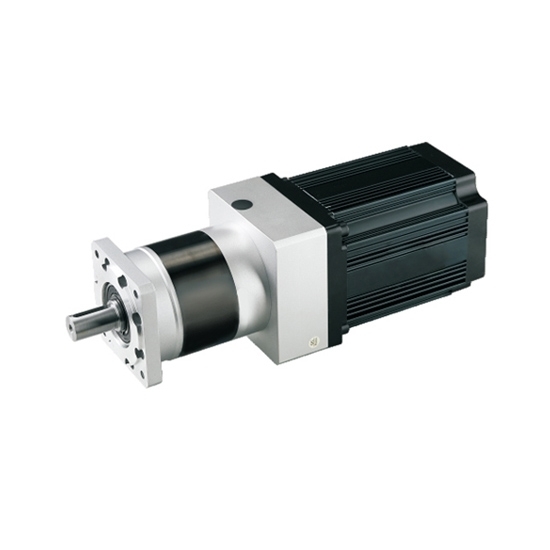A gear motor is an integrated device of speed reducer and electric motor, also known as gear reduction motor, it is usually supplied in complete sets after integrated assembly by a professional reducer manufacturer.
Working principle
The gear reduction motor generally achieves a certain deceleration purpose by driving the large gear through the small gear on the input shaft of the gear reducer (or reduction box) through the power of the motor, internal combustion engine, or other high-speed operation. By adopting a multi-stage structure, the rotational speed can be greatly reduced to increase the output torque of the geared motor. “Increasing force deceleration” is to use all levels of gear transmission to achieve the purpose of deceleration. The reducer is composed of gear pairs at all levels.
Characteristics
- Space saving, reliable and durable, high overload capacity, power up to 95KW or more.
- Low energy consumption, superior performance, and the efficiency of the reducer is as high as 95%.
- Low vibration, low noise and high energy saving.
- The high-quality segment steel material is selected, the rigid cast iron box body, and the gear surface is subjected to high-frequency heat treatment.
- After precision machining, the positioning accuracy is ensured, all of which constitute the gear reduction motor of the gear transmission assembly. Various types of motors are configured, forming mechatronics, which fully guarantees the quality characteristics of the product.
Types
Classification by motor
1. AC motor (including motor with brake or clutch): three-phase AC gear motor and single-phase AC gear motor.
2. DC motor (including motor with brake or clutch): electromagnetic gear motor and permanent magnet gear motor. BLDC motor and brushless DC motor.
3. AC (DC) servo motor.
4. Various control motors, pneumatic motors and hydraulic motors.
5. Synchronous motor and asynchronous motor.
Classified by transmission mode
1. Gear transmission: including helical gear, worm gear, parallel shaft gear, right angle gear, spiral (bevel) gear, helical gear and planetary gear. Gear transmission is the most classic transmission, with a single-stage transmission efficiency of 98%, compact structure, high reliability and large power range (up to 40 HP).
2. Cycloid needle wheel and sprocket.
3. Harmonic drive.
Common Type Gear Motors
The worm gear reducer has a reverse self-locking function and can have a larger reduction ratio. Its input shaft and output shaft are not on the same axis or on the same plane, but DC worm gear motors are generally larger in size, with low transmission efficiency and low precision.

High-performance DC planetary geared motors are relatively compact structures, small return clearance, high precision, long service life, and large rated output torque, but the price is slightly expensive.

Gear motors are widely used and are indispensable power transmission equipment for automated machinery, especially in printing machinery, corrugated machinery, packaging machinery, conveying machinery, food machinery, color box machinery, automatic storage, three-dimensional warehouses, and three-dimensional parking. Field equipment, textile, dyeing and finishing, chemical and other equipment.